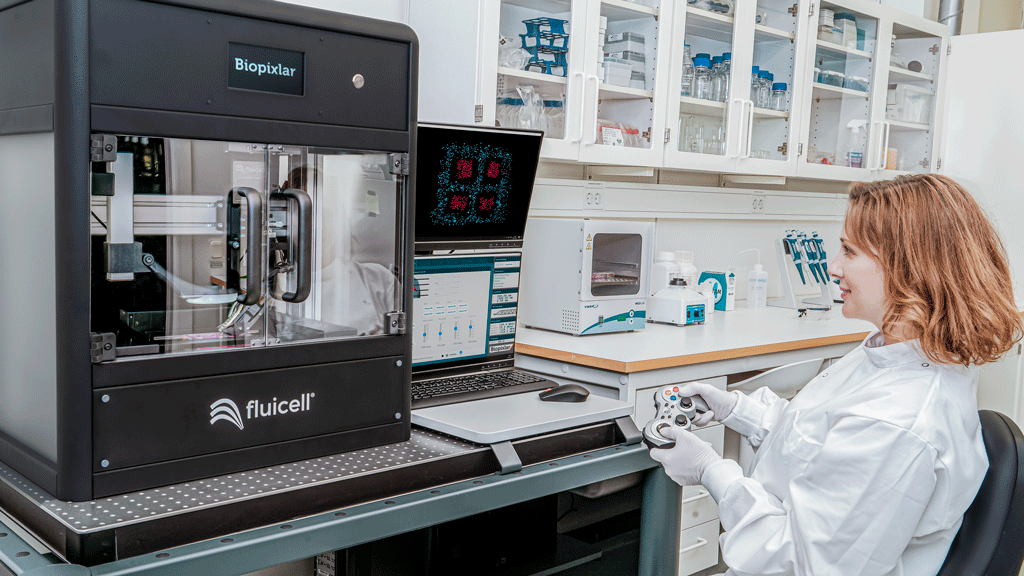Fluicell, a medical technology company spun out from the Chalmers University of Technology, Sweden has launched a high-resolution 3D bioprinter called Biopixlar. This system is an all-in-one discovery platform designed to build novel tissue models for drug development, as well as disease and regenerative medicine research.
Fluicell biotechnology
Founded in 2012, Fluicell develops platforms for cell behavior investigation. Prior to the release of the Biopixlar 3D printer, the company released its BioPen, reportedly the first single-cell lab-on-a-tip tool for targeting individual cells in vitro. An ion channel screening platform named the Dynaflow Resolve system was also produced by Fluicell.
As its latest platform, the Biopixlar enables printing of multiple different cell types in one run with high precision and resolution. The 80cm (H) x 70cm (W) x57cm (D) system includes a micromanipulator arm and a motorized stage to precisely position its printer head and sample.
A unique feature of the Biopixlar is its gamepad interface. This allows for handheld control to position the printer head and deposit cells. Furthermore, an onboard multi-color fluorescence imaging setup allows real-time monitoring of the printing process and post-print analysis.

Biopixlar technical specifications
The production of tissues and disease models can complement and decrease animal testing in the intermediate phases of drug development, causing lower development costs and fewer ethical issues. Such models also accelerate the development of personalized medicine with the use of patient-specific cells. According to Fluicell, Biopixlar offers the optimal resolution for medical research models.
The price for the Biopixlar has yet to be disclosed.
| Printing Technology | Microfluidic hydrodynamic confined flow technology |
| Printing Dimension | 2D and 3D printing |
| Printing Mode | Direct printing of cell suspension without the need for gel matrix |
| Printing Surface | Cell dish with culture medium or buffer |
| Deposition Mode | From individual to thousands of cells |
| Microfluidic Printer head | Exchangeable single-use consumable made from a medical-grade elastomer. Each has the capacity to hold up to 3 cell wells. |
| Camera | 3 Mpx high sensitivity 1920 x 1080 |
| Slide Holders | For 35 mm ø cell dish For 50 mm ø cell dish For microtiter plate (6 wells) |
| Movement Precision | 2 micrometers |
| Software | Java – cross-platform compatible |
| Control Interface | Gamepad |

Subscribe to the 3D Printing Industry newsletter, like us on Facebook and follow us on Twitter for all the latest 3D bioprinting news. Visit 3D Printing Jobs for new opportunities in additive manufacturing.
Featured image shows Fluicell’s Biopixlar 3D bioprinter. Photo via Fluicell.

